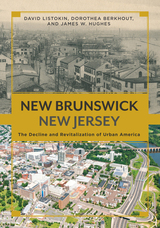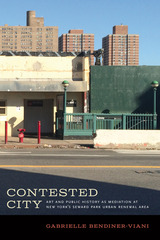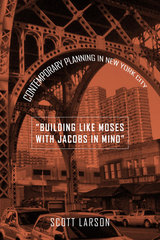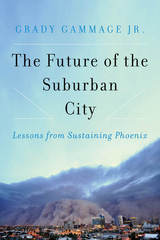St. Louis: Evolution Of American Urban Landscape
Temple University Press, 2001
Cloth: 978-1-56639-885-5 | Paper: 978-1-56639-886-2
Library of Congress Classification HT168.S79S36 2001
Dewey Decimal Classification 307.760977866
Cloth: 978-1-56639-885-5 | Paper: 978-1-56639-886-2
Library of Congress Classification HT168.S79S36 2001
Dewey Decimal Classification 307.760977866
ABOUT THIS BOOK | AUTHOR BIOGRAPHY | REVIEWS | TOC
ABOUT THIS BOOK
St. Louis's story stands for the story of all those cities whose ambitions and civic self-image, forged from the growth of the mercantile and industrial eras, have been dramatically altered over time. More dramatically, perhaps, than most -- but in a manner shared by all -- St. Louis's changing economic base, shifting population and altered landscape have forced scholars, policymakers, and residents alike to acknowledge the transciency of what once seemed inexorable metropolitan trends: concentration, growth, accumulated wealth, and generally improved well-being.
In this book, Eric Sandweiss scrutinizes the everyday landscape -- streets, houses, neighborhoods, and public buildings -- as it evolved in a classic American city. Bringing to life the spaces that most of us pass without noticing, he reveals how the processes of dividing, trading, improving, and dwelling upon land are acts that reflect and shape social relations. From its origins as a French colonial settlement in the eighteenth century to the present day, St. Louis offers a story not just about how our past is diagrammed in brick and asphalt, but also about the American city's continuing viability as a place where the balance of individual rights and collective responsibilities can be debated, demonstrated and adjusted for generations to come.
In this book, Eric Sandweiss scrutinizes the everyday landscape -- streets, houses, neighborhoods, and public buildings -- as it evolved in a classic American city. Bringing to life the spaces that most of us pass without noticing, he reveals how the processes of dividing, trading, improving, and dwelling upon land are acts that reflect and shape social relations. From its origins as a French colonial settlement in the eighteenth century to the present day, St. Louis offers a story not just about how our past is diagrammed in brick and asphalt, but also about the American city's continuing viability as a place where the balance of individual rights and collective responsibilities can be debated, demonstrated and adjusted for generations to come.
See other books on: Cities and towns | Growth | Landscape architecture | Missouri | Public spaces
See other titles from Temple University Press

























